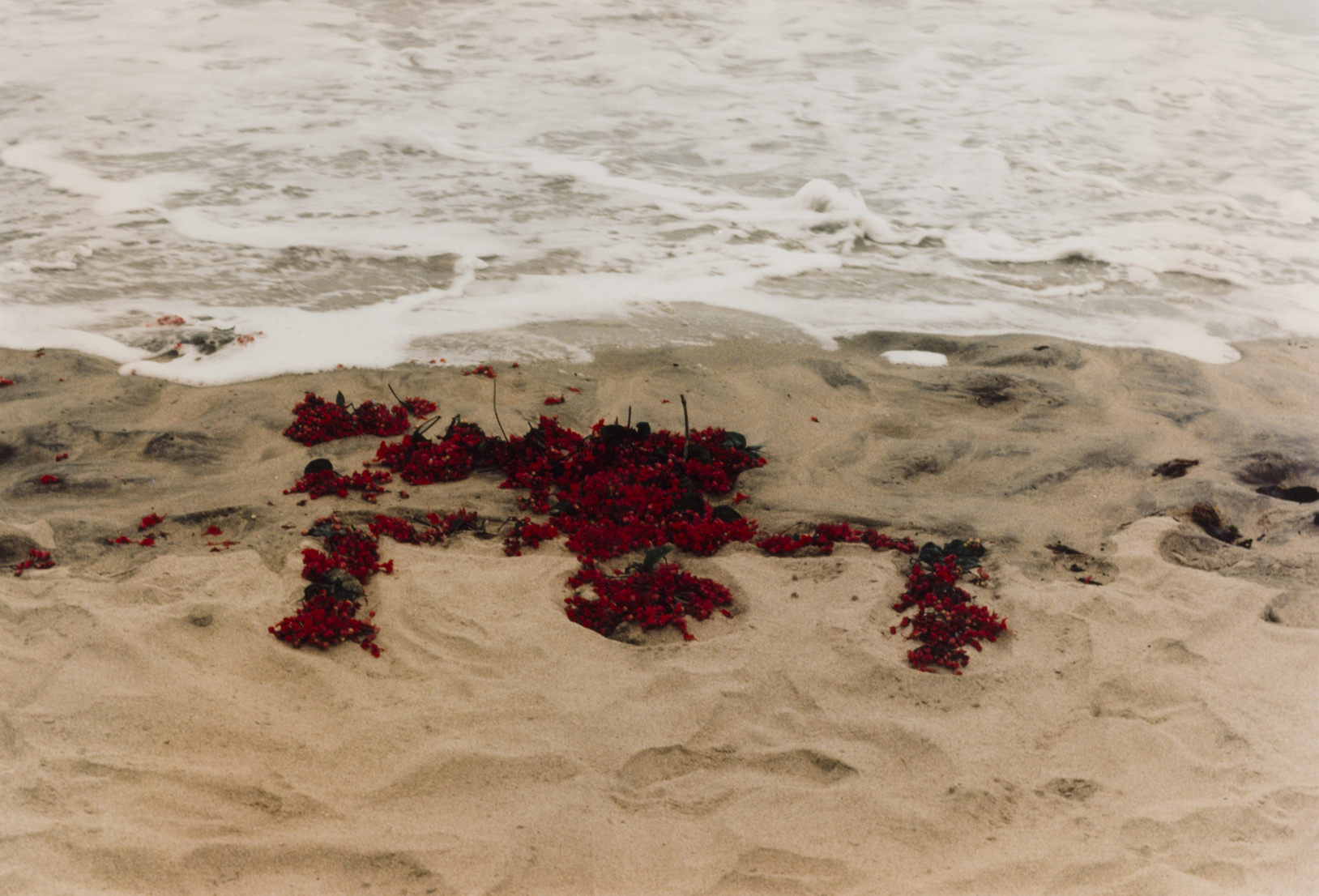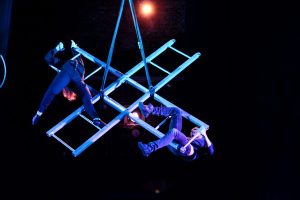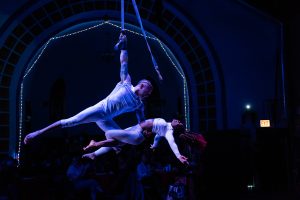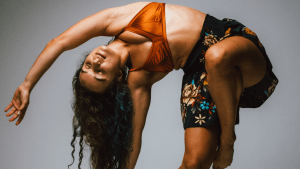The Museum of Contemporary Art’s newest show Forecast Form: Art in the Caribbean Diaspora, 1990s–Today strives to dig deeper into the Caribbean, beyond the North American and European conceptions of the area as a tropical paradise, frozen in time for tourist enjoyment. Instead, Forecast Form brings the past, present, and future of the Caribbean into full focus. Notably, it asks what is the Caribbean: is it merely defined by geography? What about the displacement and movements of people across the world? What does the Caribbean tell us about ourselves, and our future?
The show investigates ideas of diaspora, movement, and transformation as people try to negotiate multiple identities through time, space, and history. According to the exhibition’s introduction, the thesis aims to “propose that the Caribbean is a way of thinking, being, and doing that extends beyond its geographic borders, challenging our assumptions about Caribbean culture and its representation and reframing the relationship between identity and reality.”
Most importantly, Carla Acevedo-Yates, the Marilyn and Larry Fields Curator, told a group of journalists at the exhibition preview that this exhibition is not a survey or regional show. Instead, she writes in the exhibition guide that “it’s … a critique of the regional show more broadly.” This is not a chronological or anthropological exploration of the arts in the Caribbean; it’s much more complex, and frankly, more interesting. One of the artists, Teresita Fernández said in a conversation with the curator and other artists in the guide, “I think of the Caribbean as being defined by not being defined, a decentralized and prismatic concept…I see this approach to place as more like a mutable expansive sensibility one carries inside oneself.”
Keeping with the sentiment of Fernández, the how challenges our assumptions of what the Caribbean is, starting with the selection of 37 artists from all over the world, including representation from places typically overlooked in conversations about the Caribbean, such as the Philippines and Brazil. Although these countries are not geographically a part of what is known as the Caribbean, a closer look at overlapping histories, and social, political, and economic structures, reveals many correlations.
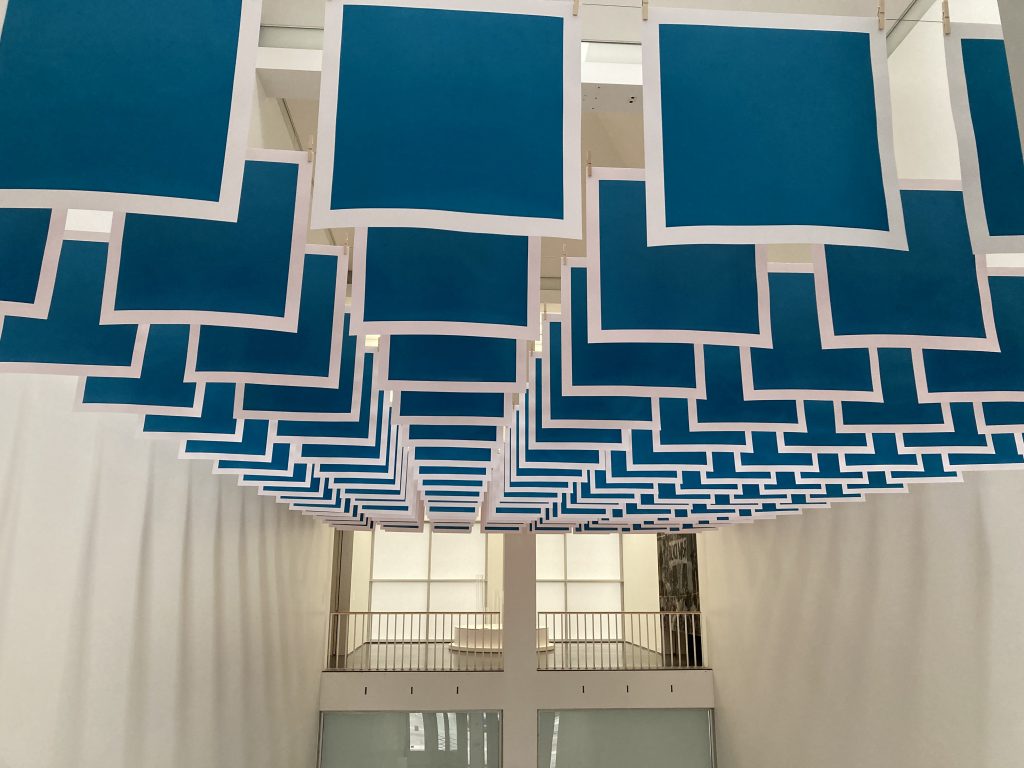
The exhibition also celebrates the diversity of media, from drawings, photographs, video installations, one kinetic sculpture, mirroring the sense of movement and change, even when stationary; and varies from abstract to representational, offering numerous readings and interpretations of the meanings of the Caribbean. Wandering through the exhibition, there’s a sense of encounter, you don’t know what you’ll find next, whether it’s on the wall, hanging from the ceiling, or even on the floor beneath you.
For instance, Zilia Sánchez’s video Encuentrismo — ofrenda o retorno (encounter — offering or return) depicts an intentionally ambiguous sculpture that drifts back and forth on the beach and the water, visually representing the sense of dislocation and rootlessness that one may feel between two places.
As I walked through the halls of the galleries, I saw works from multiple angles: through doorways and across the atrium altering how one reads each artwork which is constantly changing. For instance, when you first enter, you encounter a ceiling of 100 blue silkscreen prints hanging over the atrium. The prints are a work by Colombian artist Álvaro Barros called El Mar de Cristóbal Colón. It looks like the picturesque blue sea that many associate with the region. But when you walk to the opposite side of the atrium, midway through the entire exhibition, the other side of the silkscreens change to red, a sea of blood, which is a reference to Christopher Columbus’s inaugural voyage to the region which brought about profound exploitation and violence.
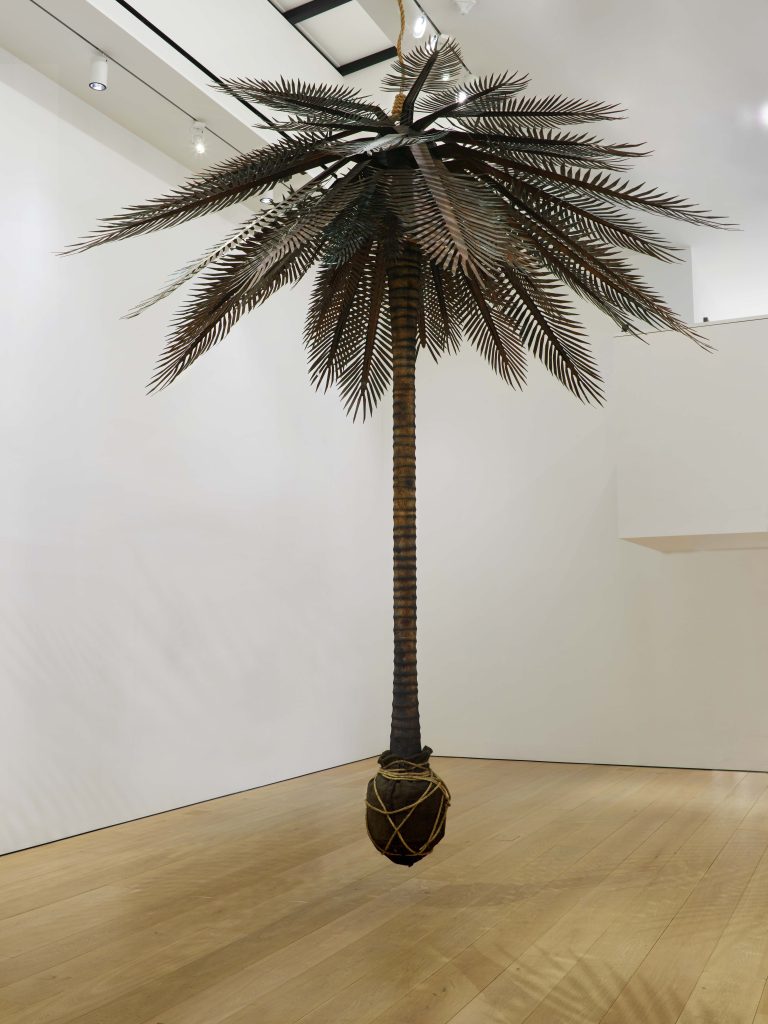
Teresita Fernández’s sculpture Rising (Lynched Land) also changes meaning as you approach it. It’s a palm tree hanging from the ceiling. From afar, the striking image makes a visual reference to rootlessness that may evoke the feeling of being taken or driven from home. But when you get closer, the tree is hanging from a noose, a reference to the legacies of violence to BIPOC the bodies, and abuse of the natural resources.
While the show focuses on movement and change, there are five photographs of Cuban artist Ana Mendieta’s Silueta Series (1973-1977) throughout the exhibition that feels like wayposts, or a lighthouse providing consistency. Most other artists’ works are displayed together, but the curator chose to split these photographs up. Each one shows the artist’s body outlined through red flower petals or other natural materials or lit up by fireworks in the night. It highlights in-betweenness; the artist is absent but present, an apt metaphor for the entire show.
Another intentional decision by the curator Acevedo-Yates is to make subtle references to North America and European colonial powers. It’s a welcome change since the show attempts to interrogate narratives of Western dominance and binary understandings of the Caribbean. One of the delightfully subtle works is Christopher Cozier’s dual video installation Gas Men and Dem things does bite too? It has the motif of businessmen acting like cowboys with gas pumps. It’s a tongue-in-cheek nod to “the man” or the structural forces that exploits and oppresses people, wreaking havoc with other people’s countries and commodities, whether through business or even covert operations.
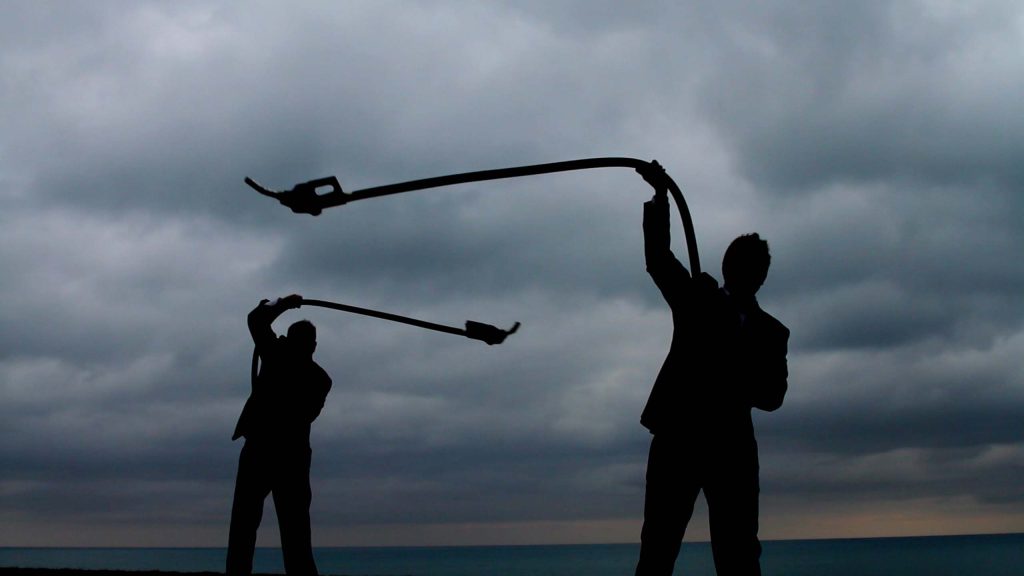
Decentering the US and European colonial powers emphasize non-Western relationships with the Caribbean. For instance, one of the highlights of the exhibition is Kuwaiti artist Alia Farid’s Mezquitas de Puerto Rico (Hatillo) which is displayed on the opposite wall from Cozier’s work and one of five commissions for this exhibiton. In this work, Farid worked with Jesús “Bubu” Negró who took a picture of a mosque in Puerto Rico. Farid then sent the image to Iranian weavers to make an interpretation of the photo into a traditional prayer rug. The resulting tapestry speaks to the legacy of Arab migration to the region and globalization through trade and exchange of ideas. Mezquitas de Puerto Rico (Hatillo) transposes various histories on top of each other, outside of Western hegemony.
In addition to the visual appeal of the works, the contextual framing argues the importance of the Caribbean in world history. Curator Acevedo-Yates summed it up poignantly in the exhibition guide: “[What] I’ve come to realize is that the core idea of the show — is that the Caribbean experience, and Caribbean history, is crucial to our understanding of the modern world, past, present, and future.”
While some might think her comment is a given, the exhibition explicates how Western narratives of Caribbean history exploit non-Western peoples and geographically reduces the definition of the Caribbean and its positionality in climate emergencies. This is not a show that can be easily pinned down nor is it meant to be comforting. That is the point. It destabilizes our conceptions of the Caribbean, pushes against mere geographical or Western-imposed values, and leaves the visitor with more questions than answers, which may reveal themselves through multiple visits. Frankly, it’s one of the most thought-provoking shows I’ve seen in a long time. I hope that we’ll see more cutting-edge shows that follow this precedent as well as shows from Curator Acevedo-Yates in the future.
MCA Show runs from Nov 19, 2022 – Apr 23, 2023.
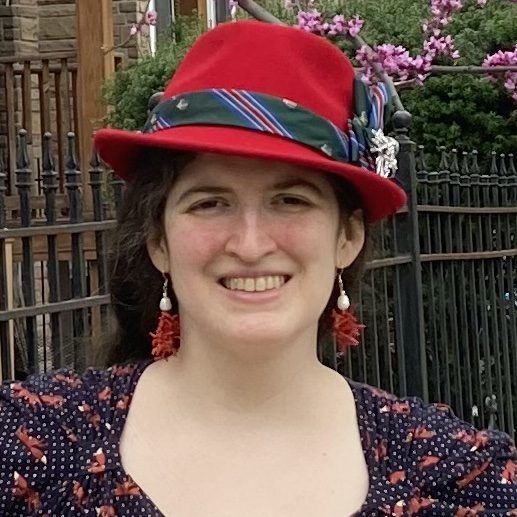
About the author: Elisa Shoenberger is a freelance writer and journalist in Chicago. She has written for the Huffington Post, Slate, Hyperallergic, the Boston Globe, and others. She writes regularly for Book Riot, Murder & Mayhem, and Cheese Professor. She has a BA. in Latin American History from the University of Chicago, MA in Latin American Studies from the University of Wisconsin-Madison, and an MBA in Marketing and Operations Management from Loyola University, Chicago. She’s obsessed with dogsledding, murder mysteries, and cheese. She plays alto saxophone in her spare time. Twitter: @vogontroubadour and at Mischief and Writing.
